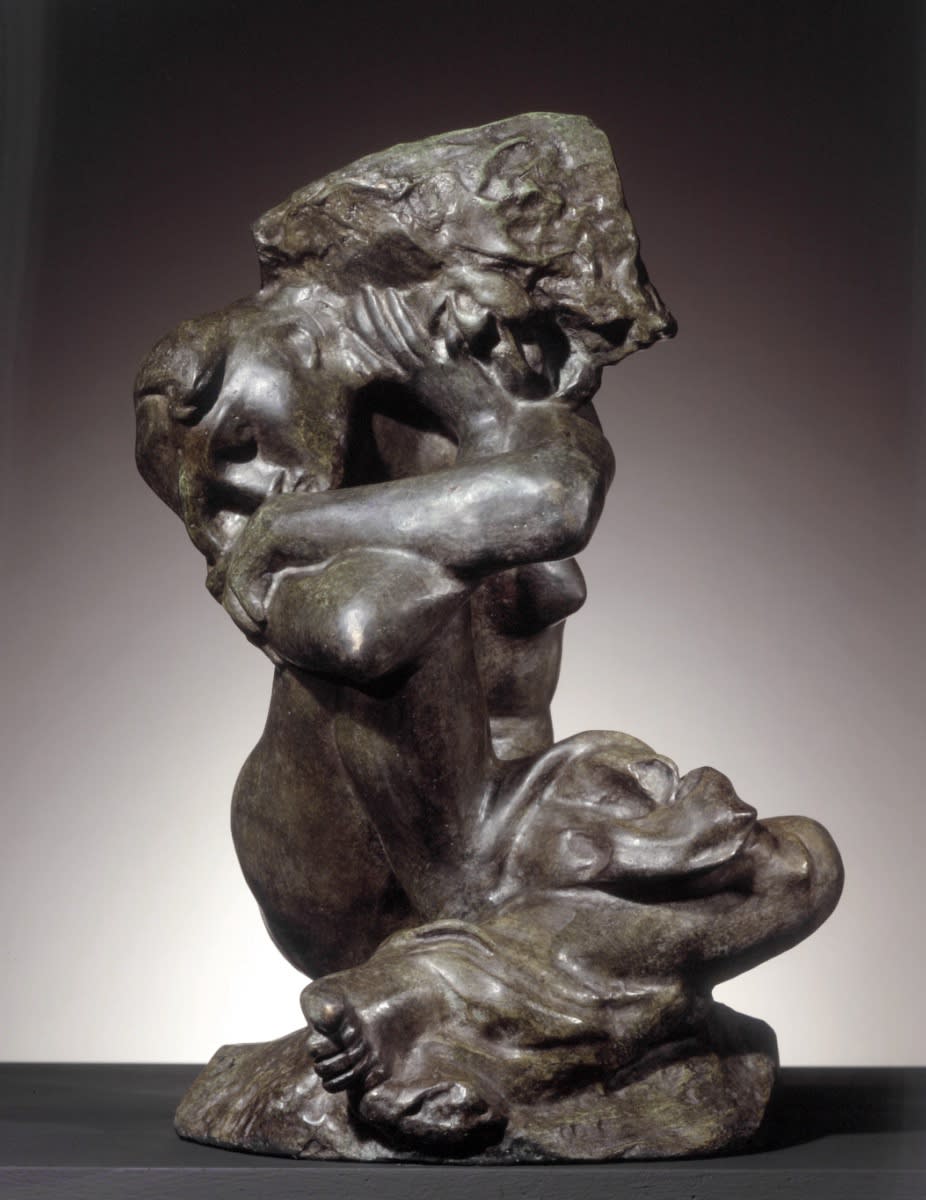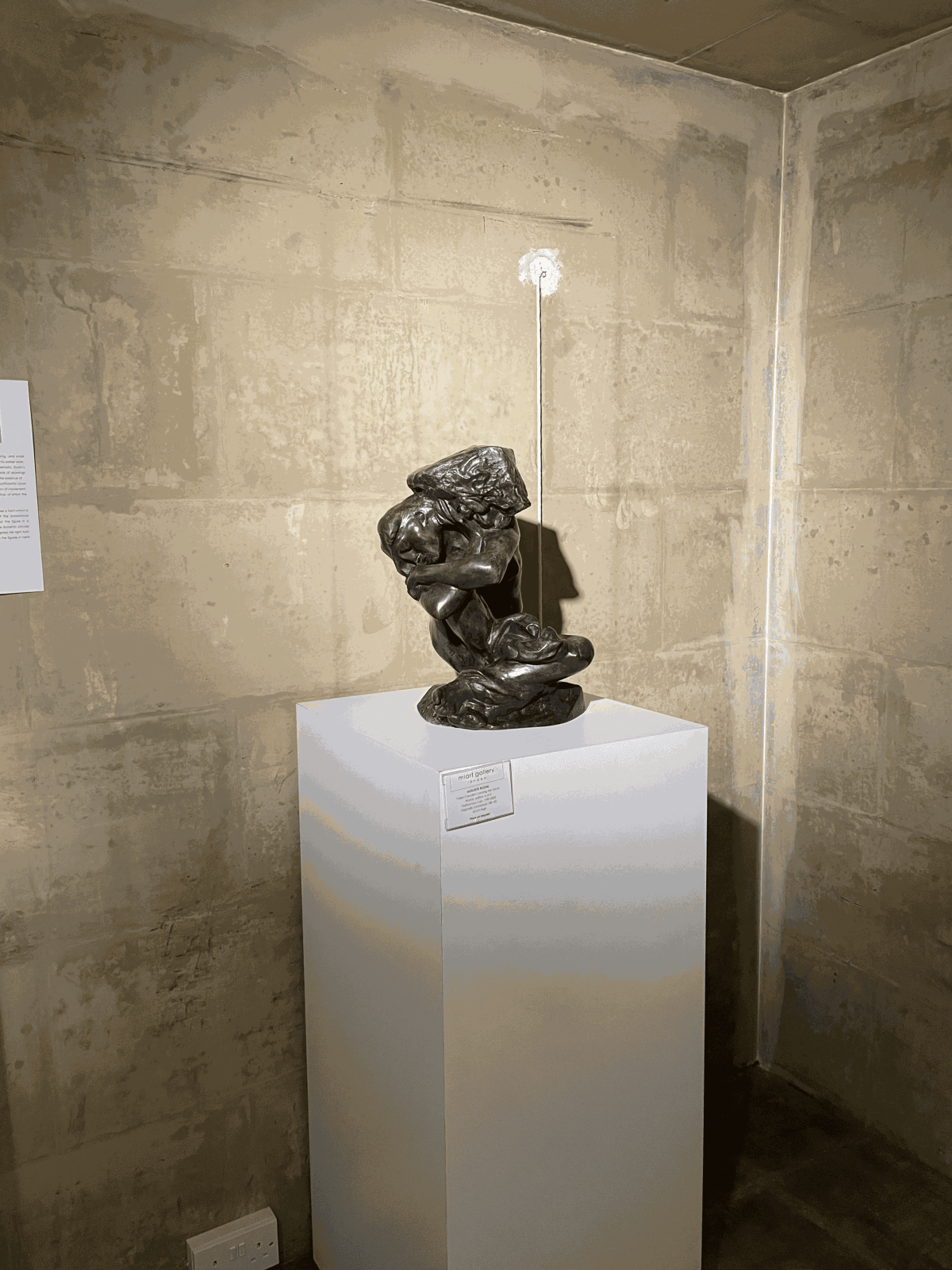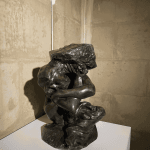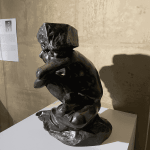Auguste Rodin French, 1840-1917
Further images
The sculpture is part of Rodin's larger series called "The Gates of Hell," which was inspired by Dante Alighieri's epic poem, "The Divine Comedy." In the sculpture, Rodin portrays a caryatid, a female figure traditionally used in architecture as a support column, who has fallen under the weight of the stone she was carrying. The caryatid is depicted in a strained and contorted position, struggling to bear the immense burden.
Rodin's depiction of the fallen caryatid captures a sense of physical and emotional struggle. The sculpture reflects his fascination with the human form and its capacity to convey a range of emotions. It also explores themes of strength, endurance, and the human condition.
"Fallen Caryatid carrying her Stone" is considered a powerful and emotive work of art. It showcases Rodin's mastery of capturing the human form and his ability to evoke deep emotions through his sculptures. The piece can be viewed in various museums and art institutions around the world, including the Musée Rodin in Paris, which houses an extensive collection of Rodin's works.









